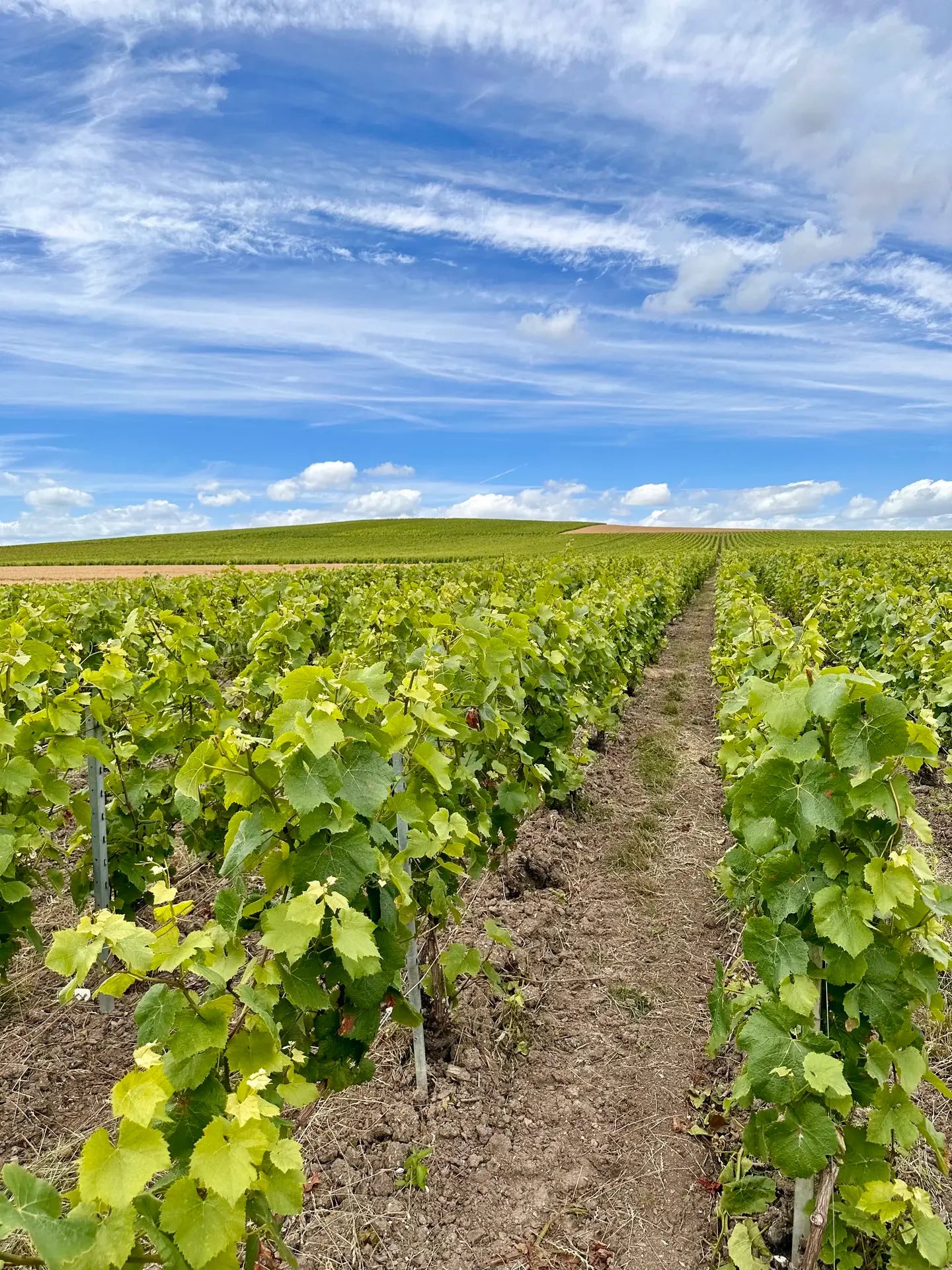Champagne is synonymous with celebration and refinement worldwide, but behind every sparkling bottle lies a unique landscape. The Champagne region boasts a rich history and is divided into distinctive sub-regions. Want to know which areas officially belong to the Champagne region and what makes each one so special? Then read on.
What exactly is the Champagne region?
The Champagne region, located in northeastern France, is the only region in the world where champagne production is permitted under strict regulations. Only sparkling wine from this demarcated region may bear the name "Champagne." This demarcation is legally defined and strictly enforced. The term "Champagne region" therefore covers more than just a geographical area; it is a label of quality.
The region is characterized by its chalky soils, relatively cool climate, and the expertise of its winemakers. This unique combination gives the champagne its freshness, elegant bubbles, and complex flavors.
The four major sub-regions of the Champagne region
The Champagne region consists of four main areas, each with its own character and characteristic grape varieties. These are: Montagne de Reims, Vallée de la Marne, Côte des Blancs, and Côte des Bar.
1. Mountain of Reims
The Montagne de Reims region lies between the cities of Reims and Épernay, on rolling hills surrounded by deciduous forests. This area is best known for its vineyards growing the Pinot Noir grape, which produces powerful and structured champagnes.
- Grape variety: Pinot Noir predominates here.
- Tasting Profile: Champagnes from Montagne de Reims are often full-bodied, complex, and powerful—perfect for those who prefer a robust style.
- Villages: Well-known villages such as Verzenay, Bouzy and Ambonnay provide grapes for some of the most famous Champagne houses.
- Special feature: Thanks to the cool climate, the grapes retain their freshness, while the chalky soil ensures finesse in every sip.
2. Marne Valley
This area runs along the banks of the Marne River and has a warmer microclimate. The vineyards face west-east, resulting in a variety of sunshine hours and, consequently, grape blends.
- Grape variety: Pinot Meunier is the star here, thanks to the fertile loam and clay soil.
- Tasting notes: Champagnes from the Vallée de la Marne are fruity, round, and easily accessible. They are often enjoyed young for their fruity expression.
- Villages: Hauvilliers and Aÿ are well known villages in this area.
- Special feature: The diversity of microclimates creates a wide palette of styles, often softer and friendlier in character.
3. Côte des Blancs
This elongated region, famous for its chalky soils and southerly exposure, lies between Épernay and Vertus. Here, the refined Chardonnay grape truly flourishes.
- Grape variety: Chardonnay dominates the Côte des Blancs.
- Tasting Profile: Champagnes are fresh, delicate and elegant, with floral and mineral notes.
- Villages: Grand Cru villages such as Cramant, Avize and Le Mesnil-sur-Oger stand head and shoulders above the rest.
- Special feature: Many of the prestigious Blanc de Blancs champagnes come from here, loved for their purity and ageing potential.
4. Côte des Bar
Côte des Bar, also known as the Aube, lies a little further south and has a unique character. The slopes are steeper, and the soil contains more limestone and marl, which gives the wines extra depth.
- Grape variety: Pinot Noir again plays the leading role, but in a softer and fruitier style than in the Montagne de Reims.
- Tasting profile: The champagnes are expressive, full of fruit and often have a softer mousse.
- Villages: Bar-sur-Aube and Les Riceys are leading within this sub-region.
- Special feature: Côte des Bar has a relatively large number of small-scale producers who passionately produce special cuvées.
Lesser-known areas within the Champagne region
In addition to the four main regions, there are some smaller areas that officially belong to the Champagne region, such as the Côte de Sézanne and Vitryat.
- Côte de Sézanne: South of the Côte des Blancs, with mainly Chardonnay, which takes on a riper style here thanks to more hours of sunshine.
- Vitryat: A compact, eastern-facing wine region. Here, chalky soils once again produce fresh, mineral champagnes.
These smaller regions often produce surprising and valuable finds, ideal for those who want to taste off the beaten track.
What makes each area so unique?
Each part of the Champagne region has its own microclimate, soil structure and grape distribution, giving champagnes from each region a distinctive character.
- Montagne de Reims: Intense and structured, often with aromas of red fruit or even toast.
- Vallée de la Marne: Accessible and fruity, ideal for a festive aperitif.
- Côte des Blancs: Elegant, mineral and floral, perfect with light dishes or as a refined treat on its own.
- Côte des Bar: Rich and expressive, often with more ripe fruit and softness.
This makes discovering the different villages and house styles extra interesting; no champagne is the same.
Premier Cru and Grand Cru: the best of the Champagne region
In the Champagne region, certain villages receive a special classification, namely "Premier Cru" or "Grand Cru." This is a recognition of the exceptional quality of their vineyards.
- Grand Cru: Only seventeen villages are allowed to call their wines Grand Cru, including Tour-sur-Marne, Avize and Le Mesnil-sur-Oger.
- Premier Cru: Approximately 44 villages fall into this category, including Chigny-les-Roses and Dizy.
Wines from these regions are entitled to this designation on their labels and are considered the cream of the crop. Connoisseurs find it interesting to compare champagnes from different vintages and discover their own favorite.
Wonderful routes through the Champagne region
A visit to the Champagne region is an experience in itself. Each subregion has its own tourist routes, charming villages, champagne houses, and tasting opportunities.
- Route du Champagne: Follow this signposted route through vineyards and picturesque villages and visit large houses and small farms.
- Visit the cellars: In Reims and Épernay you will find the famous underground cellars of centuries-old champagne houses, carved into the limestone.
- Cycle or walk through the vineyards: Discover the beauty of the landscape at your own pace and taste local specialties.
The diversity of the region allows you to truly get to know not only the champagne itself, but also the craftsmanship, culture, and gastronomy of the region.
Practical tips for your visit to the Champagne region
- Best time to travel: May to October offers the most beautiful vineyard landscapes and many local events.
- Public tastings: Many establishments, large and small, welcome visitors. Reservations are required for smaller producers.
- Accommodation: Choose a vineyard stay for a unique experience.
- Combine with gastronomy: The local cuisine is rich in specialties that combine perfectly with champagne.
Our judgment
The Champagne region is much more than just a setting for luxurious bubbles; it's a fascinating blend of vineyards, traditions, and flavors. Embark on a journey of discovery and experience the diversity and charm of its various regions. Visit the Champagne region and be amazed by everything this magnificent region has to offer!






